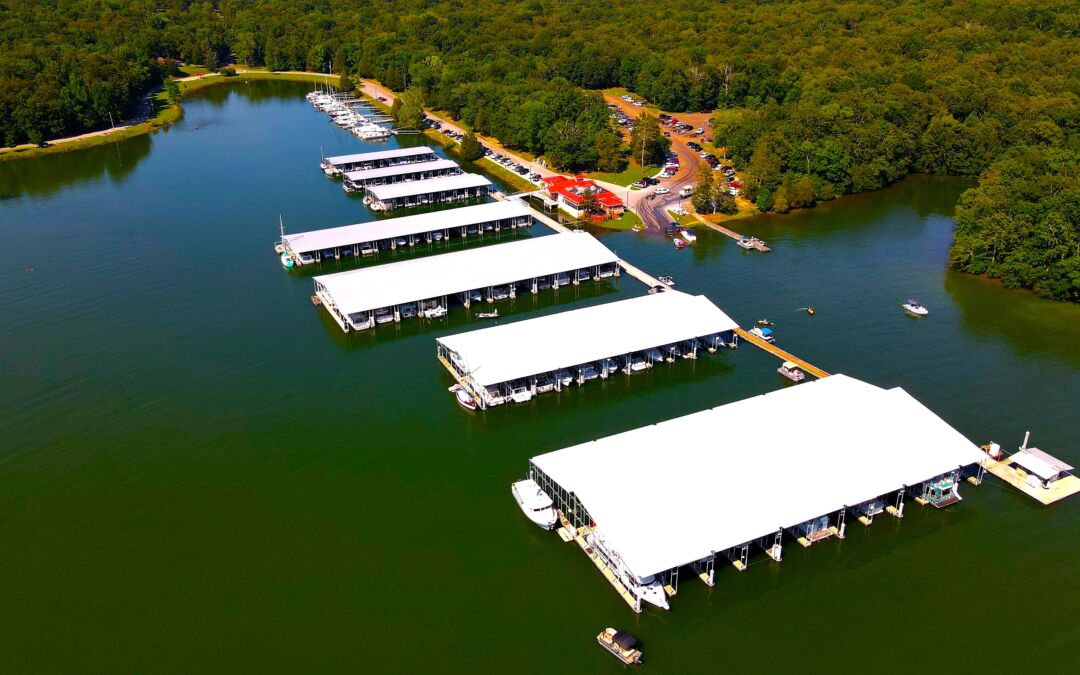Last month we wrote about how to best position your marina for a sale. We touched on addressing deferred maintenance, and identifying any potential expansion or added profit center opportunities. We basically covered the nuts and bolts. This time, we’re delving into the substantial paper trail that a marina seller will be expected to provide, and what you should start gathering and documenting.
Who Owns the Land
Anytime someone buys property they will want to ensure there’s nothing quirky about the ownership, and property boundaries. Expect a potential marina buyer to have a survey completed as well as a title and lien search. Research on waterfront land for sale is a bit more extensive as there are also issues of easements, riparian rights, and submerged land leases to consider.
Riparian rights, or more often littoral rights in the case of marinas, give landowners access to and the right to use a body of water. In some states, public rights take precedence over riparian rights. For instance, properties on Corps of Engineers lakes may face water draw downs which protect the public from floods but can leave marinas high and dry. Buyers will want to know what rights they do and do not have. Riparian rights will automatically transfer to a new owner unless the rights have been severed from the land. This is rare, but you’ll want to talk to your attorney and have documentation regarding land rights.
Similarly, in coastal areas, by law the land that sits under the water is typically owned by the state which can lease that land for certain activities. Marinas generally fit that lease criteria, but buyers will want to see proof of the lease, as well as understand the cost and requirements. Marinas have varying levels of public access and who has rights to the water in the basin as well as upland space will need to be clarified and documented.
Permits
Marina owners are all too familiar with the myriad of permits that are required to run the facility. From infrastructure to operations, there are seemingly an endless array of local, state, and federal requirements. Potential marina buyers will want to see copies of all your permits to be assured they aren’t buying into a legal tangle. Here are permits that may want to see:
- Environmental Permits such as water quality, stormwater discharge and dredging.
- Construction and Development Permits including building, coastal zone management,
and shoreline development - Operational like fueling permits, as well as items like a business license, and fire safety
inspections. - Boating and Navigation Permits may be required if the marina has moorings or if
structures impact navigation - Waste Management Permits for sewage and hazardous waste disposal if applicable
- Wildlife and Habitat Conservation Permits are necessary if marina activities may impact
protected species or habitats or wetlands.
If all of that wasn’t enough, there are also local and state-specific permits that address local waterway regulations and zoning laws. Most likely, as a marina owner you already have your permits in place, but if you’re unsure talk to your local regulatory agencies, or organizations like your state’s clean marina program or marine trade association. You can find more information in the Marina Dock Age article The Big 3 of Environmental Permitting and Compliance. Because permits can take time and money to obtain, lack of them can squash a marina sale. Make sure you have your permits and that they are up to date.
Financials
Now let’s cover money, as profitability is the main driver for a successful marina sale. To put your best foot forward consider hiring a broker or consultant who will know how to best package your financial information to put your property in the best light. They can help identify any
operational or bookkeeping errors or practices that need to be fixed.
Marina buyers want to see a profitable operation and that’s best shown through clearly identified business income and expenses. Expenses should include capital improvements you’ve undertaken over the past several years, as well as payroll. Make sure to include payroll expenses for yourself if you actively work at the marina so your payroll expenses don’t appear suspiciously low. Buyers will notice and reduce the marina’s net income by what they believe the owners should have been paid.
The clearest indication to a buyer of a marina’s value is how much profit comes in from boat storage with a close second being income derived from commercial tenant leases. Both of these have a lower expense ratio and require less labor cost than profit from service or sales. The higher your occupancy rate, the higher value you can claim so be sure to have back-up information on your lease history. It’s also wise to add in a rate history to give buyers an idea of if and when rates can be raised.
The other indicator marina buyers look for is the cap rate or the rate of return the buyer can expect. The lower the cap rate, the higher the sales price. To find the cap rate, divide the Earnings before Interest, Taxes, Depreciation, and Amortization (EBITDA) by the purchase
price. Net Operating Income is also sometimes used in place of EBITDA but there are differences which you can read about in this Investopedia article. A low cap rate averages between 4 to 6% while a high cap rate is anything over 10%. A high rate would suggest a higher potential return but with increased risk like from a fixer upper or a property with an unstable slip revenue.
Some of the factors that influence cap rate may be out of your hands such as location and market conditions. Marinas in high demand locations and competitive markets push cap rates to favorable levels. Conditions a seller can potentially alter are revenue streams and risk. Boosting income sources as we discussed in a previous blog with added profit centers and stabilizing income by finding ways to retain and attract clients, can both work to decrease risk as well as cap rates.
As a marina owner, you already know the extent of the paper trail or digital footprint left behind from running your facility. Thorough and accurate keeping of all records is critical to a well-positioned sale. If you’re thinking about selling your marina, start wading through your files and pulling aside all the important documents, and consider running your financial package through an accountant, bookkeeper or reputable marina broker. At Simply Marinas we have a team of experts we use to dot the I’s, cross the t’s and make sure your marina is ready to hit the market.
If you’re looking for further information on selling your marina, contact us for a copy of our Seller’s Guide, and feel free to ask us questions. We’ve been in the business for decades and understand just what it takes to sell your marina for the highest possible price. Give us a call when you’re ready to discuss selling your marina.
Taxes
One crucial aspect of ensuring potential liabilities from a sale are minimized while returns are maximized is tax planning. Tax professionals are well-versed in the nuances of tax regulations, including capital gains tax, depreciation recapture, and state-specific tax requirements. They can help sellers understand and comply with tax obligations while identifying strategies to legally minimize tax burdens. Tax professionals evaluate the potential tax implications and devise strategies to optimize the seller’s position. They may suggest alternatives like installment sales or utilizing tax-deferred exchanges to mitigate immediate tax liabilities. Moreover, tax professionals consider the tax
implications associated with the sale price, such as the impact on depreciation recapture, net operating losses, and potential tax credits.
To minimize tax liabilities, tax professionals employ various strategies. For instance, they can identify deductions and tax credits that the seller may be eligible for, such as environmental remediation credits or energy efficiency incentives. Additionally, they can advise on timing the sale to optimize tax benefits, taking advantage of favorable tax rates or using tax deferral options to spread out tax obligations over time.

